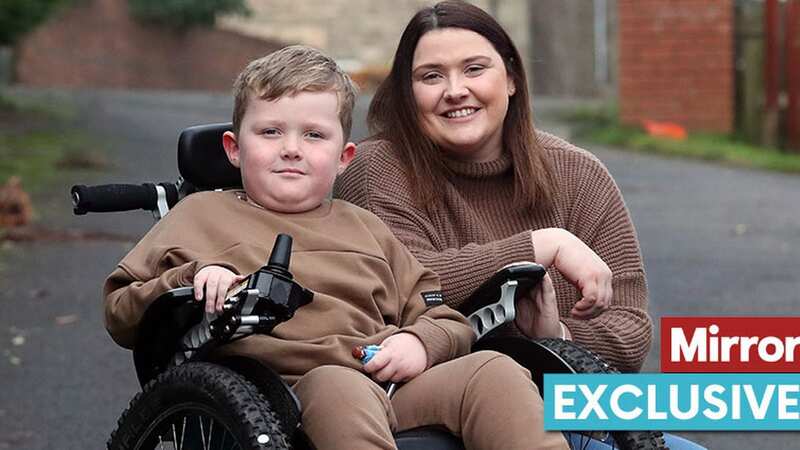'Son's paralysed by treatable disease - should have been spotted with easy test'

A mum whose five-year-old son has been paralysed by a treatable genetic disease is calling for it to be added to the NHS heel prick test.
Stephanie Tanner-Boyer first noticed baby Freddie was less mobile than peers when he was six months. Health professionals put it down to simple laziness. But symptoms persisted and aged 12 months Freddie was diagnosed with spinal muscular atrophy. Stephanie, 32, said: “After a few doses of treatment he began to roll and sit unsupported. Then he could self propel his own wheelchair. It was life-changing.”
Due to the family history, younger brother Louis was tested for SMA in the womb. He was positive and so immediately received gene therapy, preventing irreversible nerve damage. Now 21 months, he has no lasting symptoms. A child can get SMA if both parents have a faulty SMN1 gene.
 Freddie could have been diagnosed with a heel prick test
Freddie could have been diagnosed with a heel prick test Freddie and his younger brother, Louis
Freddie and his younger brother, LouisSMN1 produces a protein essential for the nerves linking the brain and spinal cord to muscles. One such child is born every five days in Britain but unless they have an older sibling with SMA, the average age of diagnosis is six months. By then 95% of lower motor neurons will have died, causing difficulties with eating, moving and breathing.
Thirteen European countries – including war-torn Ukraine – added SMA to their newborn screening test in March 2021. The UK only checks for nine out of 50 serious health conditions. This compares to 48 in Italy, 36 in Russia, 31 in Austria and 29 in Poland and Portugal. The National Screening Committee first considered adding SMA in 2018. Since then three effective treatments have been developed.
 Teachers, civil servants and train drivers walk out in biggest strike in decade
Teachers, civil servants and train drivers walk out in biggest strike in decade
Nurse Stephanie, from Gateshead, Tyne and Wear, said: “We’ve got treatments that are lifesaving and life-changing for kids if we can just diagnose them.” The Department of Health said: “The UK National Screening Committee has recommended a large-scale study for Spinal Muscular Atrophy screening in newborns. We are also working alongside the Spinal Muscular Atrophy community to enhance understanding.”
Read more similar news:
Comments:
comments powered by Disqus

































